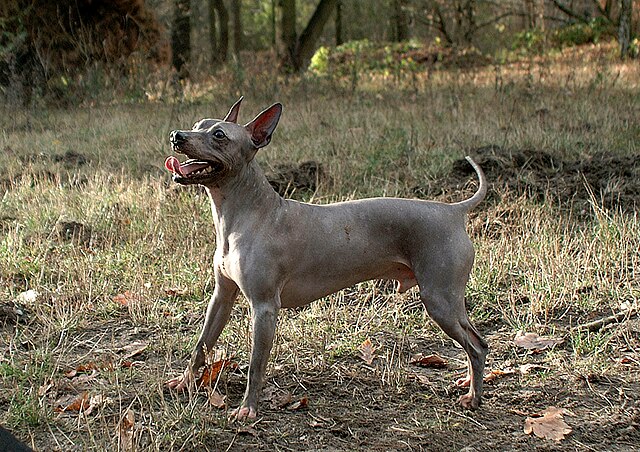


The American Hairless Terrier (AHT) is a small, energetic breed known for its distinctive lack of coat, making it an ideal choice for people with allergies. They are a lively and intelligent breed that is very affectionate and devoted to their families. The breed is characterized by its unique appearance, with a smooth, hairless body, although a coated variety also exists.
The American Hairless Terrier originated in Louisiana in the early 1970s, when a hairless pup was born to a litter of Rat Terriers. This hairless gene was selectively bred over the years, and the breed was developed as a unique, non-shedding companion dog. The American Hairless Terrier was officially recognized by the American Kennel Club (AKC) in 2016. While the breed has roots in the Rat Terrier, it has evolved into its own distinct breed due to its appearance and temperament.
The American Hairless Terrier is a small, compact dog, typically weighing between 12 to 16 pounds and standing about 12 to 16 inches tall at the shoulder. The most distinctive feature of the breed is its hairless coat, although some AHTs have a short, fine coat. The hairless variety has soft, smooth skin, and their coatless appearance makes them stand out. The breed has a well-muscled, athletic build with a wedge-shaped head, erect ears, and a straight tail. They come in various colors, including black, white, tan, and combinations of these shades.
The American Hairless Terrier is a friendly, affectionate, and intelligent dog. They are known for being very loyal to their families and thrive on human interaction. This breed is highly social and enjoys being the center of attention. They tend to form strong bonds with their owners and are known for being playful and energetic, making them great companions for active families. Although they are small, they have a confident and courageous personality. Early socialization and exposure to various environments and people are important to ensure they develop into well-rounded dogs.
Despite their small size, the American Hairless Terrier has a high energy level and requires regular exercise to keep them happy and healthy. They enjoy activities such as walking, running, and playing fetch. A daily walk combined with interactive play sessions will help satisfy their physical and mental stimulation needs. Due to their energetic nature, they should not be left alone for long periods, as they can become bored and engage in destructive behavior. They also enjoy agility training, which provides both physical exercise and mental challenge.
The American Hairless Terrier is intelligent and eager to please, which makes training relatively easy. However, they can sometimes be independent and stubborn, so consistency and patience are key when training them. Positive reinforcement techniques, such as treats and praise, work best with this breed. Early socialization is important to ensure that they are comfortable with new people, pets, and environments. Socializing them as puppies will help prevent any shy or fearful behavior as they grow older. They tend to respond well to activities that engage their minds, such as puzzle toys and obedience training.
The American Hairless Terrier is generally a healthy breed, but like all dogs, they can be prone to certain health conditions. These may include dental problems, skin issues due to their lack of fur, and joint problems such as hip dysplasia. Regular veterinary check-ups, a balanced diet, and proper exercise are essential for maintaining their health. The hairless variety may require sunscreen when exposed to the sun, as their skin is sensitive to UV rays. They are also prone to developing dry skin, so regular moisturizing is recommended. The coated variety requires regular grooming to keep their coat in good condition.
The American Hairless Terrier typically has a lifespan of 14 to 16 years, which is relatively long for a small dog breed. With proper care, including regular veterinary visits, a balanced diet, and consistent exercise, they can live a long, healthy life. Maintaining their skin health and addressing any dental concerns will contribute to their longevity.
© copyright Dog Compendium 2024 - 2025